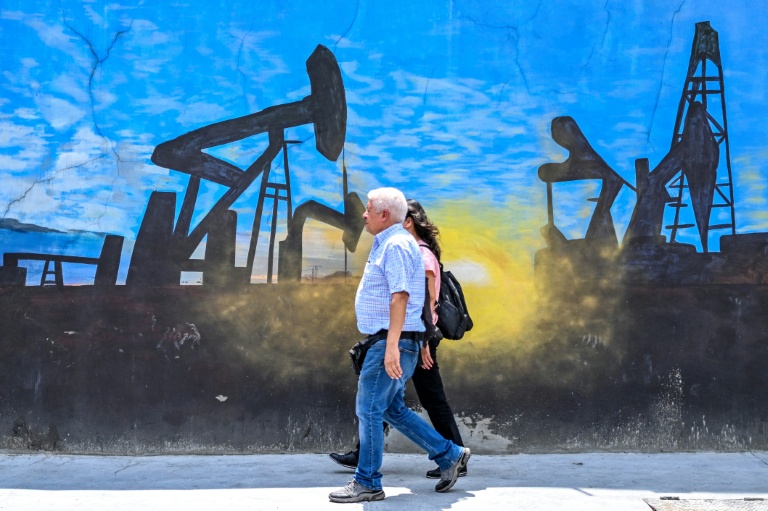(AFP) – Behind metal fences topped with barbed wire, men play volleyball and basketball at a detention center in Texas, passing time as they wait to hear if they will be allowed to stay in the United States. They are among more than 1,000 men housed at this former naval base in the US city of Los Fresnos, just a few miles from the Mexican border, which they all crossed illegally.
Tens of thousands of people walk into America every week through informal crossing points along the 2,000-mile (3,000-kilometer) frontier, bringing hopes and dreams from Latin America, Africa and Asia. Most of them turn themselves in and request asylum. Families are usually released quickly on the promise of appearing before an immigration judge in the future. But single men and women end up in centers like this one.
Miguel Vergara, director of the local Office of Enforcement and Removal Operations, said the US government has designated the Port Isabel Detention Center as a place where certain groups of migrants are kept. “Individuals who pose a national security risk, a danger to public safety, who undermined our border control efforts, or (who) crossed into the United States recently,” he told reporters on Monday.
Last week, President Joe Biden, seeking to address an issue many see as a liability five months out from his presidential election contest with Donald Trump, announced an executive order intended to stem the flow of people coming into the country. The order will allow the border to be effectively shut to asylum claimants once 2,500 people have been processed in a day. It also makes it easier to deport people, a key demand on the US right, with Trump and others saying — without evidence — that criminals are swarming the country.
– Color-coded uniforms – Port Isabel holds only men. When they arrive at the facility, they are sent to holding cells with cream-colored walls and thick doors. On the walls of the cells, which can hold between 10 and 20 people, information is posted in 15 languages. The men remain in these cells for a maximum of 12 hours before being classified and given a color to wear: blue uniform for first-time migrants, orange for those with some kind of criminal record and red for those considered dangerous. After a medical check-up and any necessary treatment, the men are taken according to uniform color to what will become their new homes for as long as they are at the facility. In the housing areas, detainees have access to ATMs which can be used to deposit any money they have, or for relatives to send them cash, which they can use in the facility’s vending machines.
– Activities – Outside the center, which shimmers in the heat of the vast Rio Grande Valley, signs prohibit hitchhiking. Cameras watch from all angles, generating the displays on a bank of monitors inside an air-conditioned control room, where guards can also see almost every corner of the facility. No one is supposed to stay in a place like this for more than 90 days, but administrators admit that can easily slip as cases go to appeal. Officials say they understand that confinement can be frustrating for these men, and say they do what they can to alleviate boredom. Activities on offer include music classes often taught by a volunteer among the migrants. Other men use their time to learn or improve the English they hope one day to use to get a better job in America. One enterprising group of migrants offers haircuts. There are movie nights, sometimes with films in the languages of the people detained. Detainees are encouraged to take part in outdoor activities, but the hours can be curtailed by the punishing Texas sun. Some people paint, producing art that represents their hope for a new life — a mural of the Liberty Bell on the library wall stands testament to the dreams of one occupant.
– Waiting for a response – Migrants have access to private cubicles where they can speak with an immigration officer as they make their case to be allowed to stay. The response will come in writing; if it is negative, the detainee can appeal to a judge, who has a court at the detention center. Further appeals are possible all the way to the US Supreme Court. A definitive “no” results in deportation. Those who are granted asylum leave within 48 hours. Anyone who wants to give up on the process can request a return to their home country. Biden’s announcement last week did nothing to slow the number of people arriving here, officials say. On Monday, the facility had around 170 spaces, but, says Vergara, he expects it will be full again soon. “Migration… is shifting kind of towards the west, so it has perhaps diminished a bit, but it is only a matter of time before the facilities in the west get full and their detainees begin to get transferred down this way,” he said. – Moisés ÁVILA
© 2024 AFP




